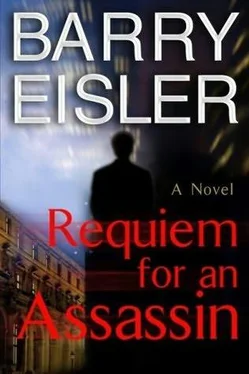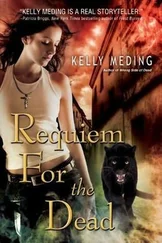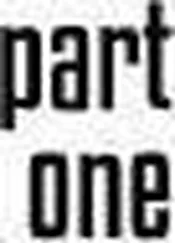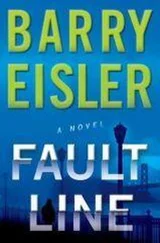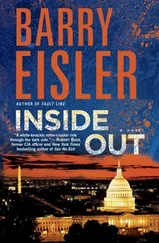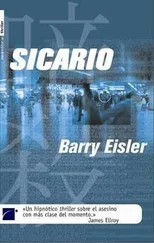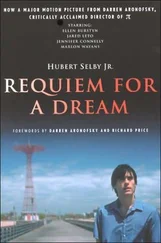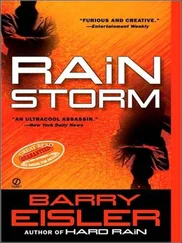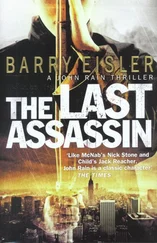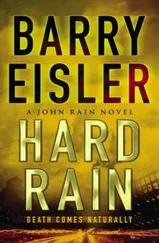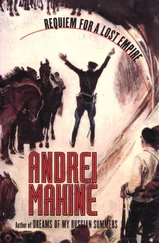I checked on the business and home addresses. Mineola was on Long Island, about twenty-five miles east of Manhattan. Sands Point was ten miles north of Mineola, on the north shore of Long Island at the tip of the Port Washington peninsula. Mineola sounded solidly middle class; Sands Point, on the other hand, apparently was the model for the town of East Egg in The Great Gatsby. Fitzgerald’s mansion was still there, I discovered, on Hoff-stots Lane, and was currently for sale for $28 million. It seemed Accinelli had done well with GPI. He certainly wasn’t living in Sands Point on his military pension.
Manhattan made me think of Midori, living in Greenwich Village with our son, Koichiro. He would be…about two and a half now. I’d seen him only once, a year earlier, and after Midori’s betrayal I knew there was no way I could have either of them in my life. A permanent gulf was best for all of us, even, much as it saddened me to admit it, for Koichiro. I thought of him, of course, late at night, when sleep wouldn’t come, and the way he looked and felt the one time I had held him in my arms. Sometimes I would open up a small vein of hope about the far-off future, and imagine going to him, explaining who I was, building a relationship, however uncertain, being part of his life. Those tenuous hopes and fragile aspirations seemed ridiculous now, weak and naive in equal measure, and I could have laughed at myself for ever having indulged them.
Sands Point had its own website, which boasted that the community was entirely residential: just eight hundred fifty families; a few houses of worship; a primary and a secondary school; and unsurprisingly, a country club with an eighteen-hole golf course. The country club was called the Village Club, and I had a strong suspicion that Accinelli, an ethnic kid who had grown up on the other side of the tracks in nearby Oyster Bay and then gone on to make something of himself, would be a member. I checked the club’s website. There was no directory of members, but there was a collection of photos from a recent New Year’s Eve party, Accinelli prominent in several of them. An attractive woman of about his age, whom I assumed was his wife, was on his arm in all the photos. The people around them were well dressed, looked well fed, and must certainly have been blessed by fortune. I made them as low-tax Republicans and limousine liberals. Probably there was more to them than that, but the shorthand would get me started as I determined how to invisibly infiltrate their society.
I thought about posting the information to Kanezaki. The sooner he had the name of the second target, the sooner he could apply the new data to the nexus we were trying to build with Hilger, and, by extension, Dox. There wasn’t an obvious connection to the CIA, as there had been with Jannick, but…I hated the thought of tipping off a government agency to an impending hit, even if the tip-off was to someone with a good track record, like Kanezaki. It was just too dangerous. I decided to play it by ear again. Worst case, I’d tell him immediately afterward, and find a way to placate him, as I had before.
Because I had accessed the bulletin board and then researched Accinelli from computers in L.A., I had to assume Hilger might now be able to place me here. I imagined how he would try to anticipate me, if that’s what he wanted to do: He’s coming from L.A. The most obvious airport would be LAX, but of course there’s Orange County, too, and Burbank. On the other end, JFK, La Guardia, and Newark are all pretty much equally possible. I haven’t given him much time, so assume he goes straight to the airport after accessing the bulletin board…
No. With a minimum of three airports on either side, the whole thing was too unpredictable. He couldn’t narrow it down enough to make it operational, not unless he had a small army of people to rotate through all three possible destination airports for surveillance of multiple incoming arrivals. Even so, as always, I would assume the presence of a welcoming party, and use extra caution leaving whatever airport I flew into.
I purged the nav system for a last time, input LAX as my next destination, and returned the car at the airport. I caught a bus to the terminal, where I discovered that United offered three red-eyes: two to JFK and another to Newark. First class was sold out on the JFK-bound flights, but there was one first-class seat left on the 10:30 to Newark. I bought a ticket, spent two hours reading the latest Economist in the departure lounge, and slept for a few hours before arriving in Newark at six-thirty the following morning.
I waited in the arrivals area with my carry-on after getting off the plane, until the passengers from my flight had cleared out. Among the people who remained, all presumably waiting for other flights, no one set off my radar, but there was no way yet to be sure. I started walking toward the baggage area, and no one followed me out. So far, so good.
I took the tram to another terminal and noted again I wasn’t followed. If someone was waiting for me, he was outside the terminal, not inside. That, or they had enough manpower for a static approach. Regardless, there were a few more things I could do to make sure.
I went to a pay phone and used the Yellow Pages to find a place called Image Rent-A-Car that specialized in exotics. I was looking to rent a Mercedes for a few days, I told them, the S Class. Did they have one I could pick up today? Unfortunately, the Mercedes rentals were all out, the helpful gentleman on the other end informed me. But they could have a navy 2006 BMW 750Li delivered to me in most places in the tristate area in less than an hour-four days, four hundred free miles, seventeen hundred fifty dollars. I told him the BMW would do, and that I’d be happy to come to him, if he could give me an address.
I went outside, and the East Coast winter cold hit me immediately. I felt my nostrils prickle, and a sudden wind cut right through the cashmere blazer I was wearing. I wanted to hunch my shoulders and jam my hands in my pockets, but didn’t, in case I’d missed something and needed to react quickly. I scanned the area as I moved. There were people around, getting in and out of cars, fumbling with luggage, but no danger signals. Damn, it was cold. The airport workers were all in gloves and hats and bulky parkas, and the exhaust coming from cars and taxis was billowing out as white steam. I’d have to pick up some warmer clothing as soon as I could.
I got in a cab and, in a thick Japanese accent, told the driver I was concerned my suspicious wife was following me. Could he take a strange route so I could make sure she wasn’t?
“Anything you want, buddy,” he said. “I’ll just put it on the meter.”
I smiled, slipping on the leather gloves I had bought in Mountain View, and thought, I love New York.
ONE HOUR, TWO CABS, and a foot route later, confident I was clean, I picked up the BMW. Among the mansions of Sands Point, it would be familiar, comforting, and invisible. I threw my bag in the trunk, turned the seat warmer on high, plugged Accinelli’s work coordinates into the nav system, and followed the directions out to Long Island.
It was Sunday morning, so traffic was light, and the trip took about an hour. Global Pyrochemical Industries was on a four-lane road called the East Jericho Turnpike, which sliced east to west through a mixed residential neighborhood about a mile south of the Long Island Expressway. The immediate area consisted of modest single-family houses, compressed into regular clusters alongside one another, set slightly back from their streets on small, rectangular patches of lawn. There were a few apartment buildings; a school and a baseball field; train tracks and a lumberyard. East Jericho itself was zoned for businesses: real estate and other professional buildings; an office-supply store; restaurants; a bowling alley. And, at the east end of it, six H-shaped buildings, arranged in two rows of three, surrounded by a chain-link fence topped with razor wire. Global Pyrochemical Industries.
Читать дальше
